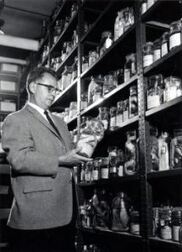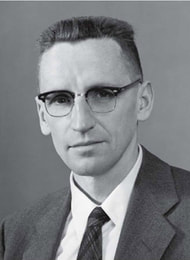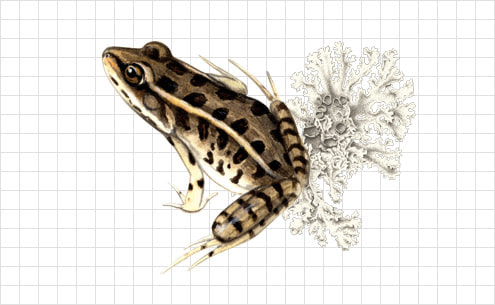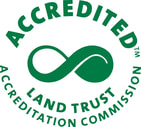Our History
Overview
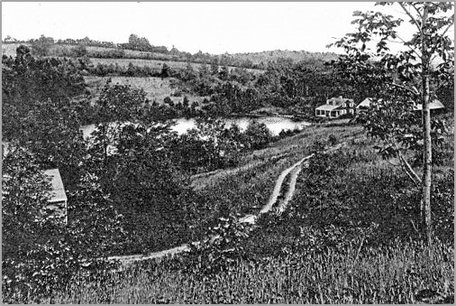
The Edmund Niles Huyck Preserve and Biological Research Station, located in the beautiful hill country southwest of Albany, N.Y., is a mecca for researchers, educators, and people seeking peace and serenity away from the pressures of modern life. The Preserve, founded in 1931, began with a 500 acre gift from the Huyck family. An additional 1500 acres have been added within the watershed since 1967. Among the natural treasures found on the Preserve are hardwood and conifer stands more than 200 years old, Lake Myosotis, Lincoln Pond, and the dramatic Rensselaerville Falls. These different ecological communities provide a haven for a rich array of flora and fauna. The Preserve, one of the oldest independent biological research stations in the United States, has supported research continuously since 1938.
Edmund Niles Huyck
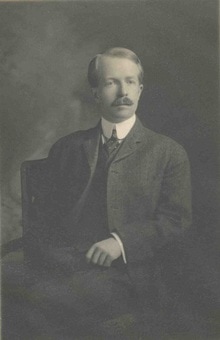
In 1629 Kilian van Rensselaer, through a charter from the Dutch West Indies Company, established a vast tract of land on both sides of the Hudson River that now encompasses Albany and Rensselaer counties. In 1785 Stephen van Rensselaer, eighth patroon of the manor, opened up the Rensselaerville area to settlement in 160 square-acre lots. Evidence of these subdivisions are still present as stone walls that snake throughout the Huyck Preserve.
In 1870, Waterbury and E.N. Huyck's father founded the fourth continuous papermaking felt woolen mills in North America at the foot of Rensselaerville Falls, turning Rensselaerville into a bustling village. However, a flood in 1878 which severely damaged the mill combined with overgrazing of farmland caused Waterbury and Huyck to dissolve their partnership and Huyck to relocate the felt mill to Albany, taking half the town’s population with it. He retained the property for recreational and community use. The remains of the felt mill are visible near the foot of the Rensselaerville Falls.
Picture, right: Edmund Niles Huyck
Founding
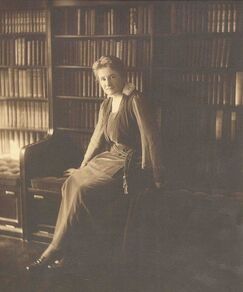
After E.N. Huyck died in 1930, his widow, Jessie Van Antwerp Huyck, established the Edmund Niles Huyck Preserve in honor of her husband. She intended about 500 acres of the property including “the Pond and its shores to be set aside for the enjoyment of the people forever.” Above all else, this natural resource is a refuge for nature - a place to be left unspoiled and undeveloped. The original charter of the Preserve states that its purpose is "to preserve the natural beauty of the Rensselaerville Falls, Lake Myosotis, Lincoln Pond and the land around them... and to increase the general knowledge and love of nature."
Picture, left: Jessie Antwerp Huyck, c.1920
Research Station
The use of the Preserve for research began in 1937 after Cornell University mammalogist, W.J Hamilton, Jr., Ph.D., conducted an evaluation of the Preserve to determine its suitability as a site for scientific research. The Biological Research Station was then formally established at the Preserve in 1938. Today’s Senior Research Fellowship (known since under various names) began this same year when Jessie Van Antwerp Huyck paid the cost of supporting three biologists. One of those biologists, Eugene Odum, Ph.D. would go on to be considered the “father of ecosystem studies.” Donald Griffin, Ph.D. would discover that bats use echo-location to navigate, helping lead the military to the development of sonar. The third biologist, Edward Raney, Ph.D. would continue on to a full professorship at Cornell University and become one of the world’s leading ichthyologists.
Growth through the years
In ensuing years, the Preserve would establish many other long-standing programs including swimming lessons (circa 1948), Nature Study (circa 1948), guided hikes lead by visiting scientists (Huyck Hikes, circa 1956), the annual Science Symposium (circa 1983), the artist-in-residence program (circa 1996), and the Middle School Natural History Day Program (circa 2000).
In addition to building its education program, the Huyck Preserve has also expanded from its original 500 acres to the 2,000+ acre Preserve with over 12 miles of trails that we see today.
Former board member and descendant of Edmund and Jessie Huyck, Laura Stephenson Carter is writing a book on the history of the Preserve. Her blog has many more articles on our history that she has teased from our archives. If you'd like to read more, be sure to check it out: ISCnews: All you ever wanted to know about research stations and more.
The Huyck Preserve and Biological Research Station is a non-profit membership organization dedicated to conservation, education, research, and recreation. For more information on how you can help us maintain the Preserve for future generations please visit our membership page.
In addition to building its education program, the Huyck Preserve has also expanded from its original 500 acres to the 2,000+ acre Preserve with over 12 miles of trails that we see today.
Former board member and descendant of Edmund and Jessie Huyck, Laura Stephenson Carter is writing a book on the history of the Preserve. Her blog has many more articles on our history that she has teased from our archives. If you'd like to read more, be sure to check it out: ISCnews: All you ever wanted to know about research stations and more.
The Huyck Preserve and Biological Research Station is a non-profit membership organization dedicated to conservation, education, research, and recreation. For more information on how you can help us maintain the Preserve for future generations please visit our membership page.
Learn More with A Field Guide to a A Field Station
|
What began as a celebration of 80 years of research at the Huyck Preserve in 2019 now includes a digital version of our research history, called A Field Guide to A Field Station, which documents the accomplishments and culture of Eldridge Research Center and its field biologists over eight decades. Together with the book of the same name, our commemorative tote bag and 80th research anniversary poster, many stories of research at the Huyck Preserve remain alive and accessible to our members and community. We invite you to check out this latest project that serves our mission of carrying out long-term research on natural systems as part of a global effort to understand and preserve the Earth’s biodiversity, and to increase appreciation of this effort through field-based educational and recreational programs for students, teachers, members and our community.
|

